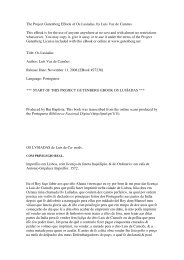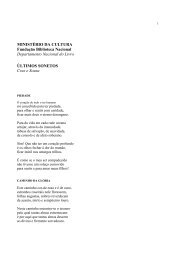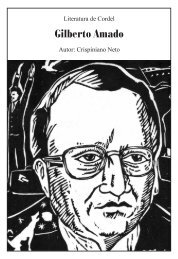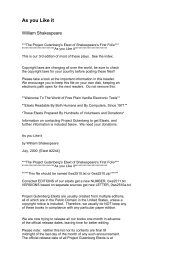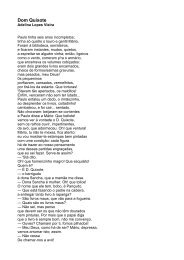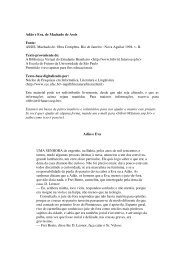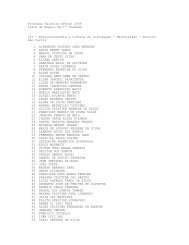You also want an ePaper? Increase the reach of your titles
YUMPU automatically turns print PDFs into web optimized ePapers that Google loves.
Rhodope, the wife of Haemus, king of Thrace, who was changed into a mountain<br />
because she thought herself more beautiful than Hera.<br />
1. 839. The allusions are to the quarrels between the Greek and Roman Churches.<br />
galoubet. A little wind instrument in shape like a f<strong>la</strong>geolet, with three holes. It was<br />
p<strong>la</strong>yed with the left hand, while the right beat a tambourine. It was peculiar to<br />
Languedoc and Provence.<br />
marche, German Mark, military frontier.<br />
L'idée. In the original edition of 1859 the word was L'épée.<br />
Josaphat. The valley of Josaphat or Jehosaphat is between Jerusalem and the Mount of<br />
Olives, and according to both Jewish and Moslem tradition is to be the p<strong>la</strong>ce of the Last<br />
Judgment. This tradition may be based on Joel iii. 12, or on the meaning of the word<br />
Josaphat, which is, 'Jehovah will judge,' or on both.<br />
goules, from Arabic ghul. English ghoul. The creatures who, according to Eastern<br />
superstition, devour dead bodies.<br />
<strong>la</strong>mies, from Lat. <strong>la</strong>mia, a fabulous being possessing the head of a woman and the body<br />
of a sea-serpent, which was supposed to devour children.<br />
en rupture de ban. Rompre le ban is to set at defiance a decree of banishment, the<br />
punishment for which was death.<br />
un dogue en arrêt. The name dogue is given to a kind of <strong>la</strong>rge dog, akin to a<br />
bloodhound, but the term is not correctly used here, as en arrêt means pointing.<br />
vermeille. See note on AYMERILLOT.<br />
SULTAN MOURAD.<br />
In his preface to the volume of 1859 Hugo appeals to the history of the Turks by<br />
Cantemir as a justification for his picture of Sultan Mourad. This was Demetrius<br />
Cantemir (1673-1723), who had a remarkable history, and wrote a valuable book.<br />
Though not a Turk, he attached himself to the Turks, and fought under the banner of the<br />
Crescent during his early life. In 1710 he was made Waiwode, or Governor, of<br />
Moldavia, Then, <strong>des</strong>erting the setting for the rising sun, he allied himself with Czar<br />
Peter the Great, then at war with Turkey. But the campaign was unsuccessful, and<br />
Cantemir, flying from Moldavia, took refuge in the Ukraine. For the rest of his life he<br />
divided his time between study and instructing the Moldavians who had accompanied<br />
him. He is said to have spoken Persian, Turkish, Arabic, modern Greek, Russian,<br />
Moldavian, and Italian. The work to which Hugo refers was a history of the<br />
aggrandizement and decadence of the Ottoman Empire. Written in Latin, and trans<strong>la</strong>ted<br />
subsequently into English, French, and German, it was long the standard work on the<br />
subject.




